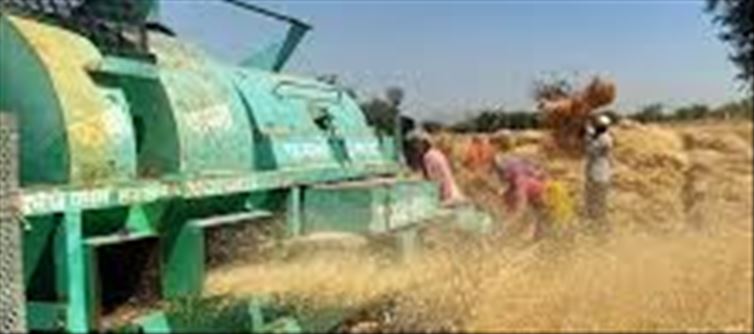
Not even 50%of machines being used in farming...
India is an agricultural country where millions of farmers are dependent on farming. A large part of the country's total population is associated with the farm sector. These farmers feed about 140 crore people in the country. But the shocking thing is that not even 50 percent of the machines are being used in farming.
If we look at the main crops like rice, wheat, maize, sorghum, millet, pulses, oilseeds, cotton and sugarcane, it is known that on an average only 47 percent of the machines were used in the cultivation of these crops till august 2022. That is, less than half the work is done by machines. This figure is also less than other developing countries like china (60%) and brazil (75%). The Standing Committee on Agriculture, Animal Husbandry and Food Processing has said in its report that it may take about 25 years for the country to reach 75-80% mechanization. The reason for this is that the number of farmers with less than two hectares of land is 86% of the total farmers. In such a situation, it is difficult for these small farmers to buy their own machine.
First, understand the importance of machines in farming
The use of machines is very important to grow farming as a business. Machines do the work quickly and can be done correctly, which increases production. Higher production increases the income of farmers. Not only this, machines work much faster than working with hands. This allows farmers to do more work in less time. Farmers have to work less hard when working with machines and the damage to the crop is also less. Farming can be modernized by using machines.
On the other hand, companies making machines for farming are also using new technologies to make their machines better, such as robots, GPS and navigation systems. This is starting a new era of use of machines in farming in India.
The availability of electricity has also increased in the agricultural areas of the country. Earlier in 1975-76, two crops were grown in a year when 0.36 kilowatt electricity was available on one hectare of land. Then in 2016-17, when 2.24 kilowatt electricity started being available on one hectare of land, more than two and a half crops started being grown in a year.




 click and follow Indiaherald WhatsApp channel
click and follow Indiaherald WhatsApp channel